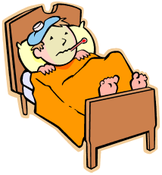Other HTLV-1 associated conditions

It has been known that HTLV-1 virus can cause inflammation not only in the spinal cord but almost in any organ. The following are some inflammatory conditions seen in people infected with HTLV-I.
Uveitis Inflammation of the eye ball, the part of the eye called the uvea. The symptoms include redness of the eye, blurred vision, sensitivity to light, dark, floating spots in the visual field and eye pain. The condition needs to be treated promptly to avoid serious complications and it's usually the treatment with steroid eye drops.
Arthritis - inflammation of one or more joints which results in pain, swelling and restricted movement. Although cases of HTLV-1 associated arthritis have been reported, very little is still known about the role of HTLV-1 in development of arthritis and more clinical and laboratory research is needed to establish the full picture of the condition. Arthritis is normally treated with anti-inflammatory drugs.
Alveolitis - inflammation of the alveoli (the tiny air sacs of the lungs). In alveolitis and HTLV-I white blood cells of immune system cause inflammation in the lung which results in shortness of breath, dry cough, tiredness, increased risk of development of chest infections.
The following tests are usually required to diagnose HTLV-I associated alveolitis: blood test to confirm HTLV-I infection, chest x-ray or CT scan of the lungs, sometime the lung biopsy. There is no specific treatment for HTLV-I associated alveolitis-the condition is normally treated with steroids or other medicines which reduce inflammation.
Uveitis Inflammation of the eye ball, the part of the eye called the uvea. The symptoms include redness of the eye, blurred vision, sensitivity to light, dark, floating spots in the visual field and eye pain. The condition needs to be treated promptly to avoid serious complications and it's usually the treatment with steroid eye drops.
Arthritis - inflammation of one or more joints which results in pain, swelling and restricted movement. Although cases of HTLV-1 associated arthritis have been reported, very little is still known about the role of HTLV-1 in development of arthritis and more clinical and laboratory research is needed to establish the full picture of the condition. Arthritis is normally treated with anti-inflammatory drugs.
Alveolitis - inflammation of the alveoli (the tiny air sacs of the lungs). In alveolitis and HTLV-I white blood cells of immune system cause inflammation in the lung which results in shortness of breath, dry cough, tiredness, increased risk of development of chest infections.
The following tests are usually required to diagnose HTLV-I associated alveolitis: blood test to confirm HTLV-I infection, chest x-ray or CT scan of the lungs, sometime the lung biopsy. There is no specific treatment for HTLV-I associated alveolitis-the condition is normally treated with steroids or other medicines which reduce inflammation.

Polymyositis - "poly" means many and "myositis" means inflammation of a muscle. The inflammation causes a varying degree of muscle weakness and pain. To confirm the diagnosis muscle biopsies are usually performed. The condition is usually treated with steroids and immunosuppressants.
Infective dermatitis - chronic, infected eczema in HTLV-I infected children and adolescents with features of erythematous, scaly lesions with mild itching. Diagnosis is confirmed by a positive HTLV-I antibody test and the skin lesion biopsy. Treatment usually involves prolonged anti-biotic therapy.
Infective dermatitis - chronic, infected eczema in HTLV-I infected children and adolescents with features of erythematous, scaly lesions with mild itching. Diagnosis is confirmed by a positive HTLV-I antibody test and the skin lesion biopsy. Treatment usually involves prolonged anti-biotic therapy.
